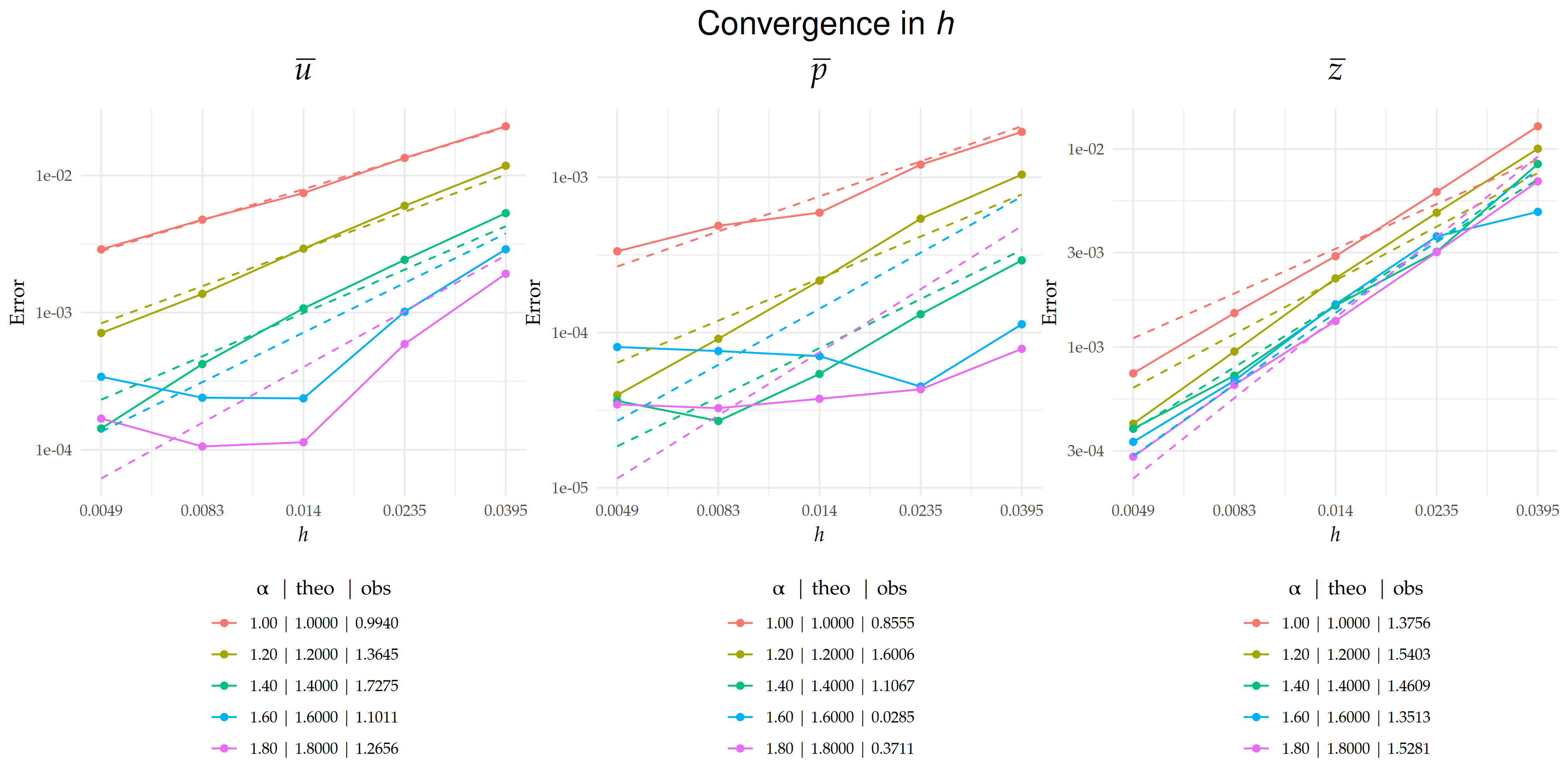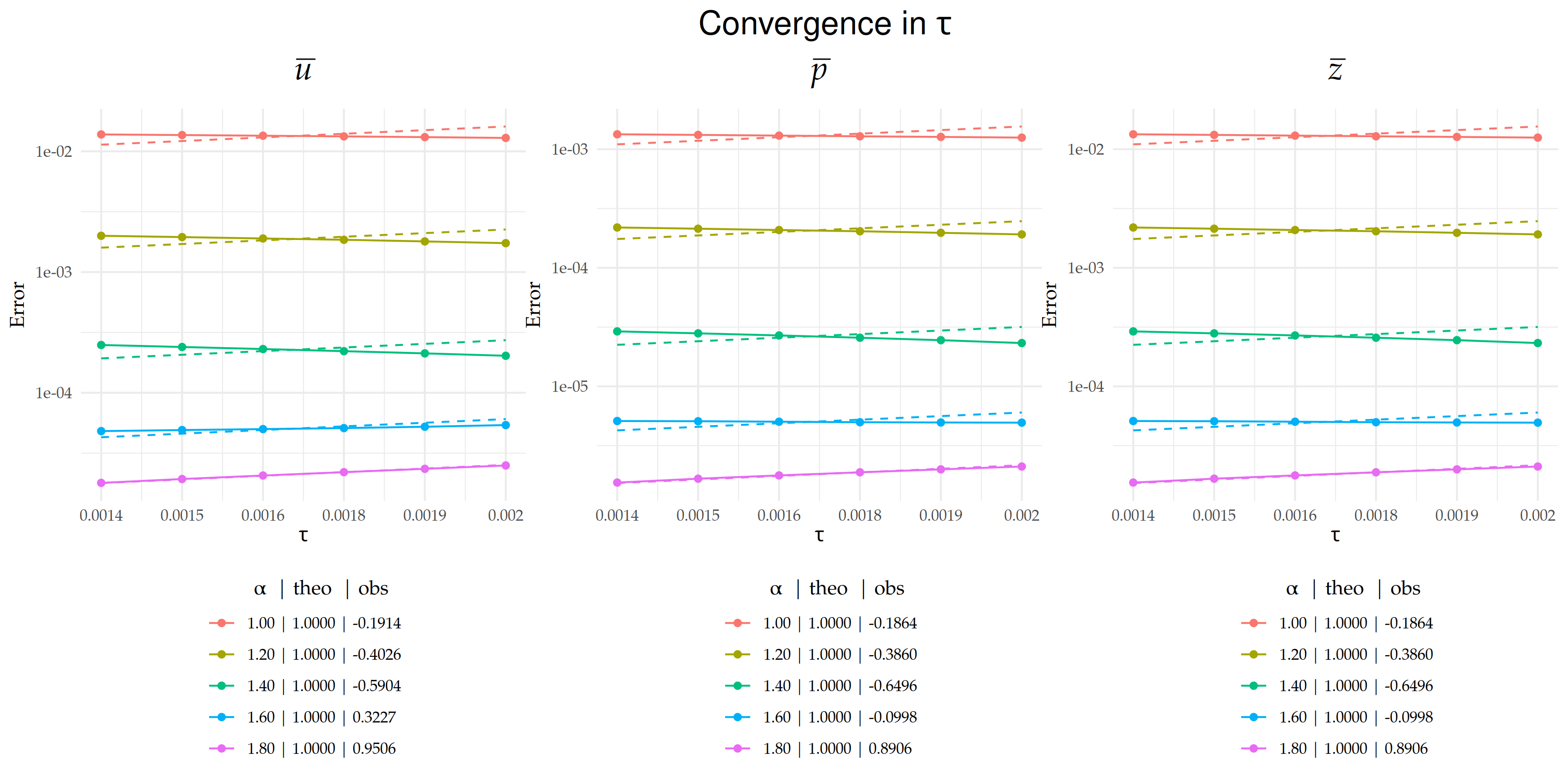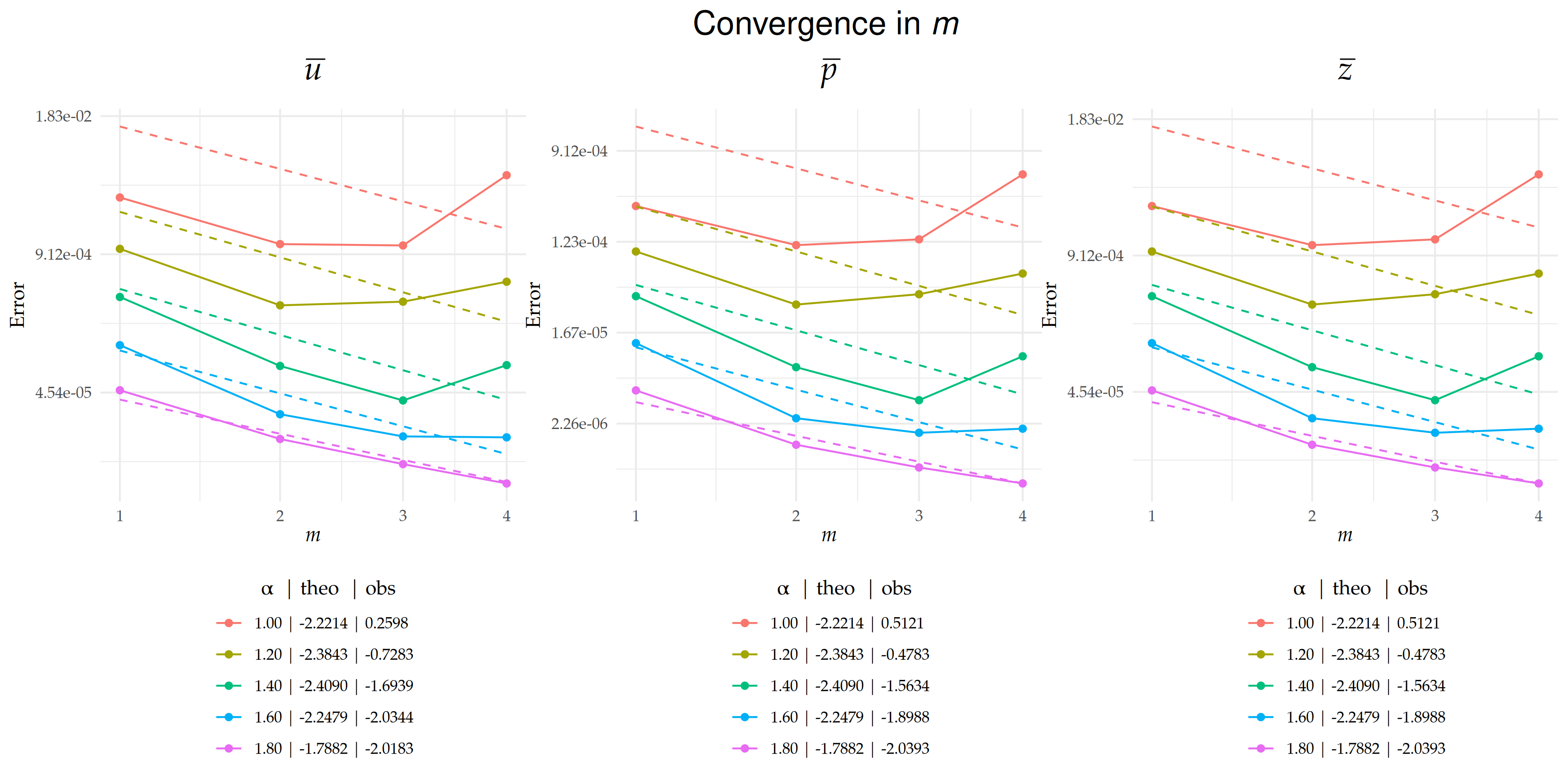Contents
- Contents
- Contents: The current page.
- Preliminaries
- Preliminaries: This page shows
- how the finite element basis functions are constructed on a metric graph (see the Basis page for an additional illustration),
- how the eigenvalues and eigenfunctions of the shifted Kirchhoff–Laplacian \((\kappa^2-\Delta_\Gamma)\) operator are computed on the tadpole graph,
- and how to project onto a fine space-time mesh.
- Functionality
- Functionality: This page shows
- Experiment
- Experiment: This page shows
- Convergence rates
- Convergence in 𝘩: This page shows
- Convergence in τ: This page shows
- Convergence in 𝑚: This page shows Figure 1 shows the convergence results. For details on how these plots were generated, please refer to the hyperlinks above.

Figure 1: Comparison of theoretical and observed convergence behavior for the \(L_2((0,T);L_2(\Gamma))\)-error with respect to \(h\), \(\tau\), and \(m\). The left and center plots display the convergence rates in \(h\) and \(\tau\), respectively, on a \(\text{log}_{10}\)–\(\text{log}_{10}\) scale, while the right plot shows the exponential decay in \(m\) on a semi-\(\text{log}_{e}\) scale, with \(m\) plotted on a square-root scale. Dashed lines indicate the theoretical rates, and solid lines represent the observed error curves. The legend below each plot shows the value of \(\alpha\) along with the corresponding theoretical (‘theo’), and observed (‘obs’) rates for each case.
- Optimal control
- Optimal control: This page shows
- Convergence in 𝘩: This page shows

Figure 2: Comparison of theoretical and observed convergence behavior for the \(L_2((0,T);L_2(\Gamma))\)-error with respect to \(h\) on a \(\text{log}_{10}\)–\(\text{log}_{10}\) scale. Dashed lines indicate the theoretical rates, and solid lines represent the observed error curves. The legend below each plot shows the value of \(\alpha\) along with the corresponding theoretical (‘theo’), and observed (‘obs’) rates for each case.

Figure 3: Comparison of theoretical and observed convergence behavior for the \(L_2((0,T);L_2(\Gamma))\)-error with respect to \(\tau\) on a \(\text{log}_{10}\)–\(\text{log}_{10}\) scale. Dashed lines indicate the theoretical rates, and solid lines represent the observed error curves. The legend below each plot shows the value of \(\alpha\) along with the corresponding theoretical (‘theo’), and observed (‘obs’) rates for each case.
- Convergence in 𝑚: This page shows

Figure 4: Comparison of theoretical and observed convergence behavior for the \(L_2((0,T);L_2(\Gamma))\)-error with respect to \(m\) on a semi-\(\text{log}_{e}\) scale, with \(m\) plotted on a square-root scale. Dashed lines indicate the theoretical rates, and solid lines represent the observed error curves. The legend below each plot shows the value of \(\alpha\) along with the corresponding theoretical (‘theo’), and observed (‘obs’) rates for each case.